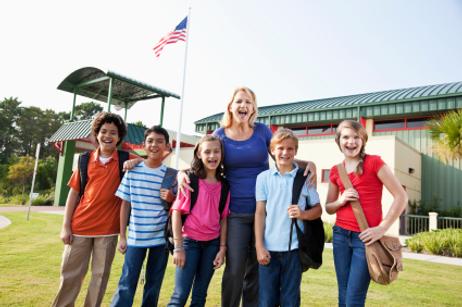Parents want to ensure their children obtain the best education possible, but few know how significantly their input can turn a campus into a top public school. There are numerous ways parents can get involved to raise the bar for the neighborhood school system. Consider these four ideas to help your schools achieve the quality you want for your children.
Parental Involvement in the Classroom
When parents enter the classroom, they obtain a better perspective of the teacher and students' challenges. Parental involvement encourages better communication between the teacher and parent and between the parent and child. According to a study by Henderson and Berla, the benefits of parental involvement to students include:
- Higher grades and test scores
- Better attendance
- More homework completed
- Improved attitudes
- Higher graduation rates
Benefits are not restricted to students, however. The school also benefits from parental involvement in the following ways:
- More support for teachers from families
- Improved teacher morale
- Higher student achievement
- Better reputation in the community
Parents also benefit from getting more involved in school business. By becoming involved, parents develop more confidence in the school and teachers. Moms and dads also become more confident in their parenting abilities and their children's potential for success.
In this TEDX Talk, Megan Olivia Hall discusses building robust relationships with teachers and parents.
Better Nutrition and Fitness
Obesity is becoming a national epidemic in the United States, and it is no longer just the adults that fall victim. The incidence of obesity in children is also on the rise, which may affect the ability of students to learn effectively. The USDA recommends that schools adopt a wellness policy that encourages healthy eating and physical fitness for their students. The components of this policy might include the following:
- Promotion of wellness by setting goals for nutrition education and physical fitness
- Nutrition guidelines that should be followed during the school day
- A measuring rod to track the implementation of the wellness policy
- Community involvement in the development and implementation of the wellness policy
Parents can become important in creating and maintaining a wellness policy that stresses healthy lunches by taking a cue from Project Appleseed. They can persuade schools to stop making junk foods available to students by removing soda and snack vending machines. They can work to educate schools about the importance of organic fare and help them find affordable local sources. Parents can also teach their children at home about the importance of healthy eating, so the kids will be more likely to make good food choices during the school day.
School Safety
A safe school is a more productive, successful school, but providing a secure environment for children is often a job too big for school administrators and teachers to handle alone successfully. PTA.org stresses the importance of school safety and offers options for parents to get involved. These might include:
- Talking with children about safety and getting input about gaps in the current system and what could be done to improve school security
- Assessing school security by asking questions of the staff regarding school entry points, visitor policies, and communication capabilities
- Assisting with the creation, training, and implementation of a crisis team that is trained to handle a variety of potential school emergencies
- Bringing security concerns to school officials to work together to resolve them
When parents and school staff work together to improve security, the result is often a more secure learning environment where students can flourish.
This video from CBS Morning reports on safety measures implemented in schools.
Racial Diversity
Studies repeatedly show that students who learn in a racially diverse environment enjoy many benefits. This is especially true for minority children, but it also applies to the rest of the student population.
According to a report in Chicago Defender, segregated schools are not beneficial to our children. The report states,
"Almost half of America's Black students and nearly two-fifths of Latino students attend high schools that have been labeled 'dropout factories' by Johns Hopkins University researchers and the U.S. Department of Education, where less than 60 percent of the freshman class will graduate in four years."
Parents can ensure schools follow policies the Supreme Court and other government agencies laid out regarding racial desegregation, helping students get the best possible education.
Making sure children have the best possible education is a team effort. When parents become team members, it is more likely that public schools will achieve higher ratings and academic success overall.
Questions? Contact us on Facebook. @publicschoolreview












